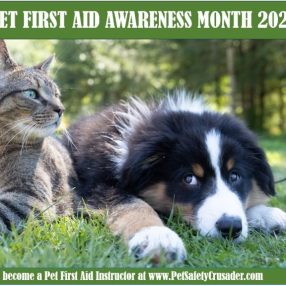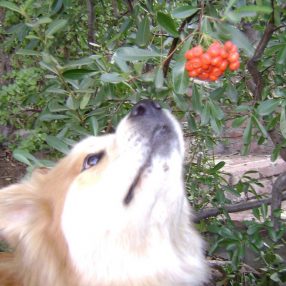
If you live in cold country, you know that snow and ice removal can be accomplished by melting, scraping or shoveling the cold, wet, slushy or hard stuff away. Adding chemicals to it first, can make the job a whole lot easier! The purpose of these chemicals is to lower the freezing point of water. In addition to melting the snow and ice, they also prevent it from reforming and sticking to surfaces. These de-icing chemicals typically consist of salts (sodium, magnesium calcium and potassium chlorides), alcohols and glycols – not what you’d want inside your pet! Unfortunately, that is what can happen when our pets go out exercising and answering nature’s call. The chemicals attach to their fur and paws and then they ingest when they groom themselves. The salts and other chemicals will irritate paws, and depending on the type of deicer used in your neighborhood, your pet’s problems can range from tummy upsets to kidney failure.
Prevention
- When walking your pooch, stay clear of surfaces coated with chemicals.
- Accustom your dog to waterproof booties.
- If your dog won’t wear wear paw attire, wash paws with a warm damp washcloth, and then dry after every walk. Keep hair growing between paws pads trimmed short to prevent chemicals and ice balls from sticking. Apply paw wax to pads before going out, but still wipe clean after walks.
- Try pet-safe alternatives around your home, and ask your city officials to do the same. Morton® Safe-T-Pet® Ice Melt® was developed by veterinarians, and is a pet-safe way to melt snow and ice. Completely free of salt and chloride, it is effective to 10°F. Kitty litter and gravel won’t melt ice, but can provide traction to help prevent people and pets from slipping on slick surfaces.
- Never let pets drink from puddles or eat snow, since either could contain toxic chemicals.
Signs, Symptoms & Treatment
Unfortunately, it doesn’t take much. A small dog or cat needs only to ingest less than ½ Tablespoon, or 3 Tablespoons for an extra-large dog, for fatal results to occur! Within 3 hours of licking de-icing salts from their paws, drinking it from a puddle of melted snow or by whatever means the animal ingests the toxin, these signs and symptoms may occur: burns to the lips and skin, cracked paw pads, vomiting, diarrhea, lethargy, shortness of breath, disorientation and seizures. Quickly get your pet to your veterinarian or animal emergency center where treatment for hypernatremia (too much salt) will include administration of IV fluids and monitoring electrolytes and blood levels. This is a serious condition.
Providing traction to slippery sidewalks and roadways is important to preventing injury however, we must also protect our furry family members in regards to the ways in which this task is accomplished. Let snow create a winter wonderland, but keep it a safe time for all by protecting precious paws and every inch of those furry bodies!
Denise Fleck is the Pet Safety Crusader™ having personally taught more than 20,000 humans to rescue Rover or help Fluffy feel better. Her mission is to help YOU make a difference in the life of an animal through Pet First-Aid, Senior Pet Care and Disaster Preparedness classes and books. Learn more at www.PetSafetyCrusader.com










